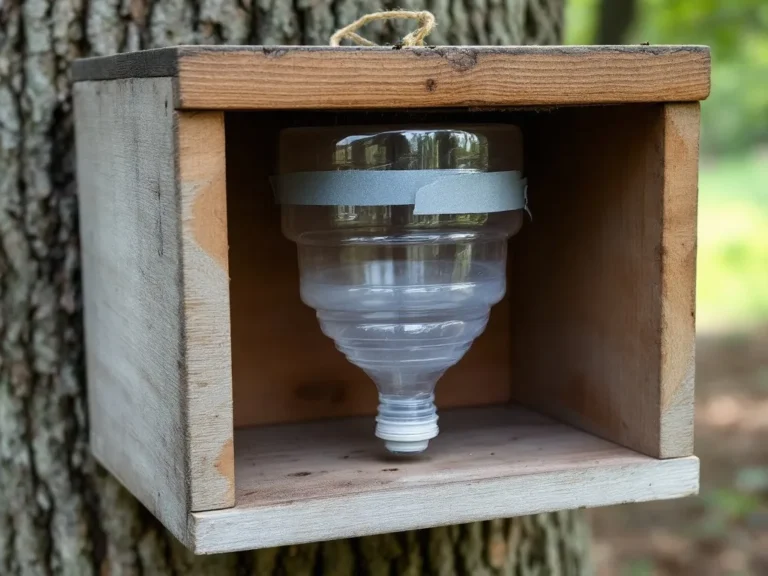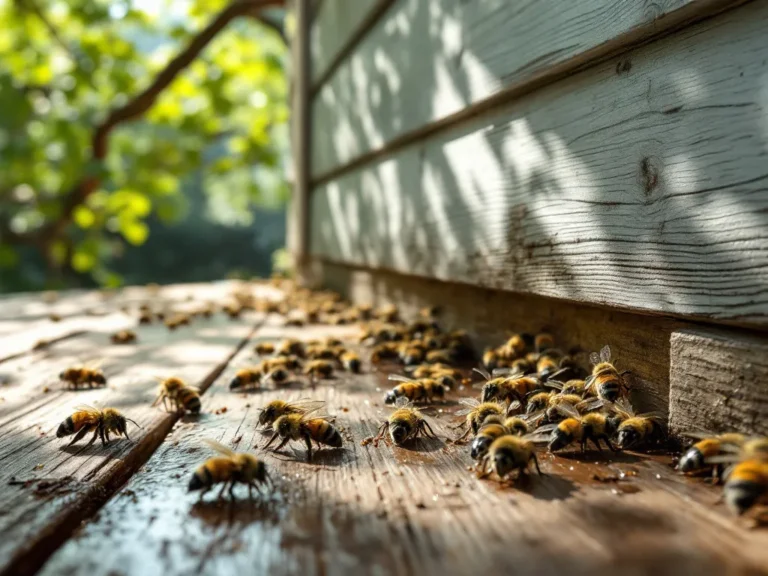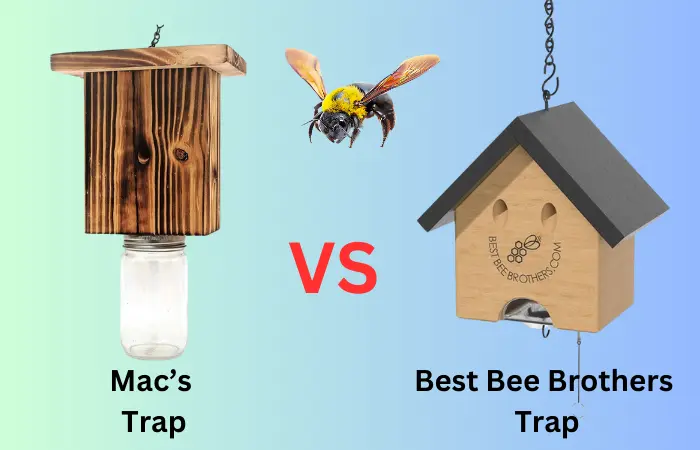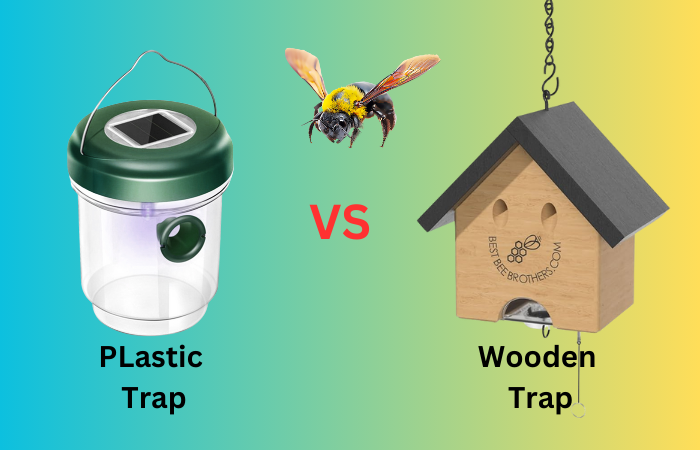If you’ve ever dealt with carpenter bees, you know how frustrating it can be to find those perfectly round holes dotting your wooden porch, fence, or eaves. These bees aren’t interested in your honey; they’re architects of their own nests, burrowing into wood to create their homes. And while they’re fascinating creatures, their handiwork can lead to some not-so-fascinating repairs.
Plugging these holes is one of the simplest ways to stop carpenter bees in their tracks and protect your home from further damage. But it’s not just about shoving something in there and calling it a day. The right wooden corks can make all the difference, providing a durable and seamless fix that blends with your existing wood. In this guide, we’ll dive into the best wooden corks for sealing carpenter bee holes available in the USA, helping you choose the perfect product to keep those bees at bay—and your woodwork intact.
Why Use Wooden Corks for Carpenter Bee Holes?
Wooden corks are a go-to solution for plugging carpenter bee holes for a few good reasons:
- Durability and Aesthetic Match: Corks made from wood blend naturally with the material around them and can be sanded, stained, or painted to match perfectly.
- Ease of Use: They’re simple to install—no fancy tools or complicated instructions needed.
- Eco-Friendly Option: Unlike synthetic alternatives, wooden corks are biodegradable and align with the natural wood of your structures, avoiding the use of harsh chemicals.
By choosing wooden corks, you’re not just sealing a hole; you’re helping to maintain the integrity and appearance of your wood surfaces while preventing moisture and pests from making things worse.
Key Considerations When Choosing Wooden Corks for Carpenter Bee Holes
Before you grab just any plug, here’s what to keep in mind:
- Size Matters: Carpenter bee holes are typically around 1/2 inch in diameter, but it’s always best to measure each hole. Make sure the corks you choose fit snugly without forcing them in, which could cause splitting or further damage.
- Quality of the Wood: Opt for corks made from high-quality, untreated wood like pine or cedar. These are soft enough to fit well but durable enough to withstand outdoor conditions without rotting quickly.
- Ease of Installation: Look for corks that slide in easily but provide a firm seal. Some even have slightly tapered ends or come with adhesive for added security.
- Aesthetic Compatibility: If the look of your wood is important, choose corks that can be finished to blend in. This could mean staining or painting them once they’re in place.
- Durability: Make sure the corks can handle the elements—rain, sun, and everything in between. Some woods, like cedar, naturally repel insects and resist moisture, making them a great choice.
Top Wooden Corks for Carpenter Bee Holes in the USA Market
Here are some top picks for wooden corks that will help you tackle those pesky carpenter bee holes effectively:
- Pro Plug System for Wood by Starborn Industries
- Features: These hardwood plugs are designed for outdoor use and resist weathering well.
- Sizes: Available in various diameters, ensuring a snug fit for standard carpenter bee holes.
- Ease of Use: Easily inserted and can be sanded flush with your surface for a seamless look.
- Why It’s Recommended: They offer a professional finish and are ideal for areas where appearance matters.
- Woodpeckers Birch Dowels
- Features: Made from sturdy birch, these dowels come in multiple diameters, including perfect sizes for carpenter bee holes.
- Sizes: Range from 1/4 inch to 1 inch, making them versatile for different hole sizes.
- Ease of Use: Can be easily cut, sanded, and finished to match your woodwork.
- Why It’s Recommended: They’re a cost-effective and durable option that provides a strong seal.
- The Hillman Group Poplar Dowels
- Features: Lightweight yet strong, poplar dowels are an excellent choice for plugging holes and are readily available.
- Sizes: Typically found in diameters that match carpenter bee holes, like 1/2 inch.
- Ease of Use: Easy to trim and insert, they can be customized to the exact fit needed.
- Why It’s Recommended: Poplar dowels strike a good balance between price, availability, and performance.
- Cedar Plugs by Woodworks Ltd.
- Features: Naturally resistant to pests and moisture, cedar plugs are perfect for outdoor use.
- Sizes: Tailored for common carpenter bee hole sizes, ensuring a tight fit.
- Ease of Use: Cedar is easy to work with and provides natural insect-repelling properties.
- Why It’s Recommended: Cedar’s resistance to pests and weather makes these plugs especially effective.
- Walnut Hollow Basswood Dowel Rods
- Features: Basswood is soft enough for easy installation and strong enough for a reliable seal.
- Sizes: Available in a range of lengths and diameters, suitable for plugging carpenter bee holes.
- Ease of Use: Easy to cut and sand, and can be painted or stained to match existing surfaces.
- Why It’s Recommended: Basswood dowels are user-friendly and provide a secure seal with minimal effort.
How to Properly Plug Carpenter Bee Holes with Wooden Corks
Sealing up those bee holes is straightforward, but here’s a quick step-by-step to make sure you’re doing it right:
- Inspect and Clean the Holes: First, ensure all bees have vacated the holes. Clean out any debris using a small brush or compressed air.
- Apply Insecticide: Spray a suitable insecticide into the holes to kill any remaining bees or larvae. Let it sit for 24-48 hours.
- Insert the Wooden Corks: Cut the corks to size if needed, and apply wood glue to the sides for added security. Tap the cork into the hole until it’s flush with the surrounding wood.
- Sand and Finish: Once dry, sand the area smooth and finish with paint or stain to match your existing wood.
- Regular Checks: Keep an eye on your woodwork for any new holes. Regular maintenance can help prevent future infestations.
Extra Tips for Preventing Carpenter Bee Damage
- Maintain Your Woodwork: Keep your wood painted or stained to deter carpenter bees from boring new holes.
- Protect Vulnerable Areas: Install metal screens or flashing over areas where bees are prone to drill.
- Use Natural Repellents: Citrus or almond oil can be sprayed on wood to discourage bees from nesting.
- Inspect Regularly: Routine checks, especially in spring and late summer, can help catch and address problems early.
Final Toughts
Dealing with carpenter bees doesn’t have to be a headache. By choosing the right wooden corks and following proper sealing techniques, you can effectively protect your home from these industrious pests. Whether you’re after a seamless look with hardwood plugs or the natural benefits of cedar, there’s a solution that fits your needs. With a little attention to detail and regular maintenance, you can keep carpenter bees at bay and preserve the beauty of your woodwork for years to come. So, gear up, plug those holes, and enjoy your carpenter bee-free space!





